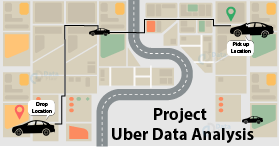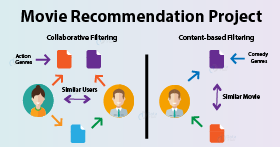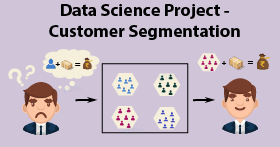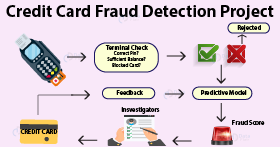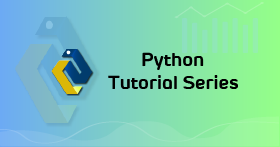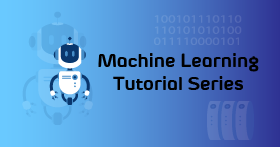R Tutorial: Learn R from Scratch and Become a Data Scientist
Are you ready to take your data analytics skills to the next level? Our R tutorials can help! Our practical R tutorials will guide you through the latest techniques in statistical analysis, data visualization, and machine learning. With these R tutorials, you’ll be able to turn your data into valuable insights that can be used to make data-driven decisions. Imagine the ability to predict future outcomes, uncover hidden patterns and trends, and the ability to make more informed decisions.
What is R Programming?
R is a programming language, an alchemy of data, the art of turning raw data into gold. It is popular for data analytics and creating and implementing statistical models. R has a large, developing, active community contributing to its development and support through packages and libraries. R is also commonly used in data science projects and can be integrated with other tools such as Python, SQL and Tableau. R programming is the gateway to the future, unlocking predictions and helping us navigate the uncharted territories of technology.

Getting Started with R Programming
Check out these R tutorials and ease your way to become the next data scientist. Choose where to begin, learn at your own pace:
Beginner
- R Tutorial
- Learn R Programming
- R Programming Language
- Features of R Programming
- Pros and Cons of R
- Why Learn R?
- R Applications
- R Data Types
- Data Structures in R
- R Vector
- R List
- R Matrix Operations Applications
- R Array
- R Factor
- Principal Components and Factor Analysis in R
- Control Structures in R
- Functions in R
- R Vector Functions
- Numeric and Character Functions in R
- Matrix Function in R
- R Recursive Function
- Arguments in R
- R Vs Python
- Data Analytics Tools – R vs SAS vs SPSS
- Data Analytics with R, Tableau and Excel
- R Career
- R Books
Intermidiate
- R Data Frame
- R Packages Tutorial
- List of R Packages
- R Packages for Data Science
- R Data Reshaping
- Object Oriented Programming in R
- R Debugging
- Input-Output Features in R
- R String Manipulation Functions
- Data Manipulation in R
- Descriptive Statistics in R
- Contingency Tables in R
- R Graphical Models
- Generalized Linear Models in R
- Graphical Models Applications
- Graphical Data Analysis with R Programming
- Data Visualization in R
- Bar Chart in R
- R Lattice Package
- Save Graphs to Files in R
- R Performance Tuning
- Hypothesis Testing in R
- R Linear Regression
- R Nonlinear Regression Analysis
- Logistic Regression in R
- OLS Regression in R
- Statistics and R
- R Decision Trees
- Random Forest in R
- Bootstrapping in R
- Exploratory Data analysis In R
- Machine Learning for R
Expert
- RStudio Tutorial
- How to Install R, RStudio and R Packages
- R and Hadoop Integration
- R Clustering Tutorial
- Clustering in R
- Classification in R Programming
- e1071 Package – SVM Training
- Bayesian Network in R
- Introduction to Bayesian Methods
- Probabilistic Bayesian Networks Inference
- Bayesian Network Applications
- Normal Distribution in R
- Binomial and Poisson Distribution in R
- Importing Data in R
- Exporting Data from R
- Predictive and Descriptive Analytics
- Survival Analysis in R
- T-tests in R
- ANOVA in R
- Chi-Square Test in R
- Data Analytics Tutorial for R
R Projects
- Data Science Project – Sentiment Analysis Project in R
- Project in R – Uber Data Analysis Project
- Data Science Project – Detect Credit Card Fraud with Machine Learning in R
- Data Science Project – Customer Segmentation using Machine Learning in R
- Machine Learning Project – Data Science Movie Recommendation System Project in R
Exploring the R Language
Let’s take a look at some facts about R programming and its philosophies.
R Tutorial
R Programming language is used for performing statistical computing as well as graphical processing of data. It was developed by Ross Ihaka and Robert Gentleman at University of Auckland, New Zealand.
Various data scientists, statisticians and data analysts use the R programming language for analyzing data and carrying out statistical analysis using visualizations. With the help of R, you can perform data analysis on structured and unstructured data.
History of R Language
R first appeared in 1993 as an implementation of the S programming language. The term R comes from the fact that both of its creators’ names begin with the initial of R. Version 3.5.1 rolled out in July of 2018; we call it Feather Spray. This is a programming language and a free software environment for statistical computing and graphics. You will often find statisticians and data miners using it to develop statistical software and for data analysis.
Apart from a command-line interface, some IDEs like the RStudio let us work with graphical front ends.

Ross Ihaka

Robert Gentleman
Why Should I Learn R Programming?
- R is a powerful tool for data analysis and visualization. If you’re working in a field that involves analyzing data, such as statistics, finance, or marketing, learning R can give you the skills to analyze and present data in a clear and effective way.
- R is a widely used language in industry and academia. It is commonly used in data science and machine learning, and is the language of choice for many statisticians and researchers. Having R programming skills can make you more marketable in the job market and open up new career opportunities.
- R has a large and active community. This means that there are many resources available for learning R Programming, including tutorials, forums, and packages. Additionally, the community regularly develops new packages to make R even more powerful, so you will always have access to the latest tools.
- R is free and open-source. This means that you can use it without any financial burden and it allows you to access and modify the source code, if you want to create new functionality.
- Learning R can be rewarding in itself. It can be a challenging and stimulating experience, as it requires problem-solving skills, logical thinking, and creativity. It can also be a lot of fun, as you’ll be able to create interesting and informative visualizations and models.
Applications of R Programming
- Data Science and Machine Learning: R is used extensively in data science and machine learning projects. It has a wide range of libraries and packages that make it easy to clean, manipulate, and analyze data. R also has built-in visualization tools that make it easy to create interactive data visualizations.
- Predictive modeling: R is widely used in Predictive modeling, it has a lot of powerful packages for statistical modeling, and it is commonly used in industries such as finance and insurance to forecast future trends and make decisions based on that.
- Healthcare: R is being used in the healthcare industry for data analysis and visualization. It’s used for creating models to predict patient outcomes, analyzing electronic health records, and identifying patterns in large datasets to improve patient care.
- Business: R is used by many businesses for data analysis and visualization. It can be used to analyze customer data, predict sales trends, and create data-driven marketing campaigns.
- Social Media Analysis: R is used to analyze and visualize data from social media platforms like Twitter, Facebook, and Instagram. This allows businesses to track sentiment and engagement, identify influencers, and gain insights into their target audience.
- Research: R is widely used in research, it is a powerful tool for statisticians, researchers, and scientists to analyze and visualize data. It has a wide range of libraries and packages that are specifically designed for research applications, such as genetics, ecology, and sociology.
R programming is a powerful tool that is used in tons of industries. It is widely adopted in data science, machine learning, predictive modeling, healthcare, business, social media analysis, and research. It’s a valuable skill for anyone who wants to become a data scientist.
